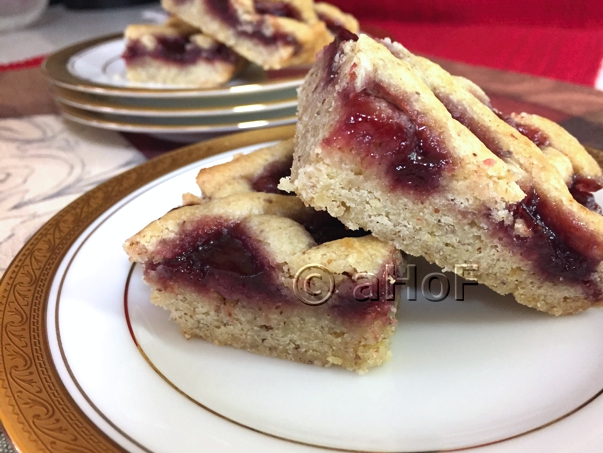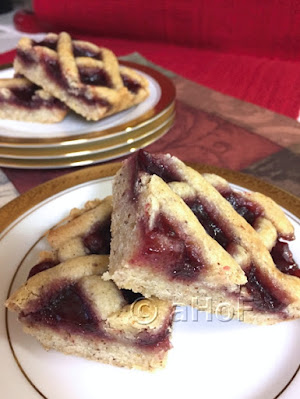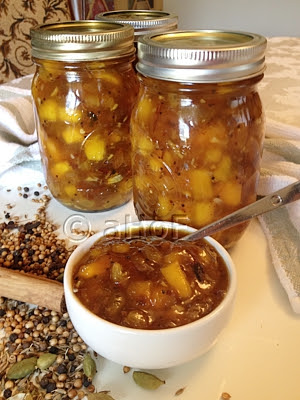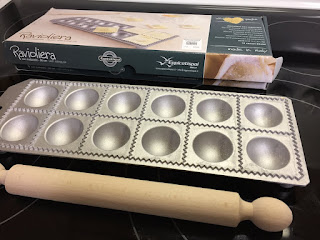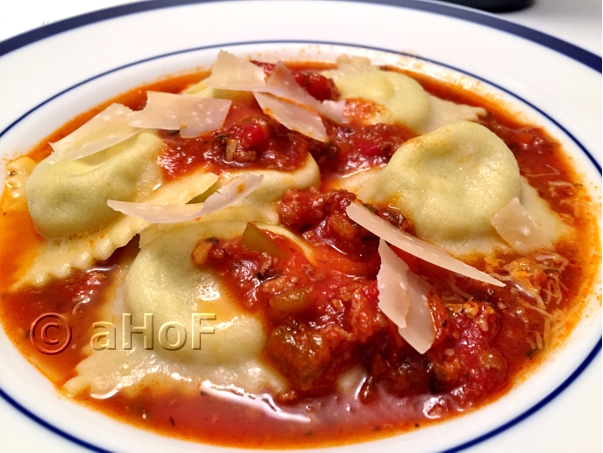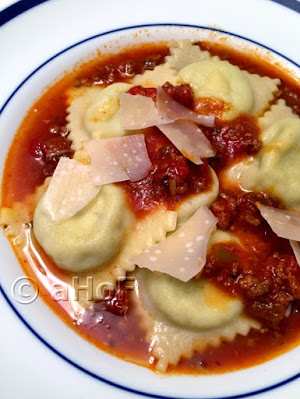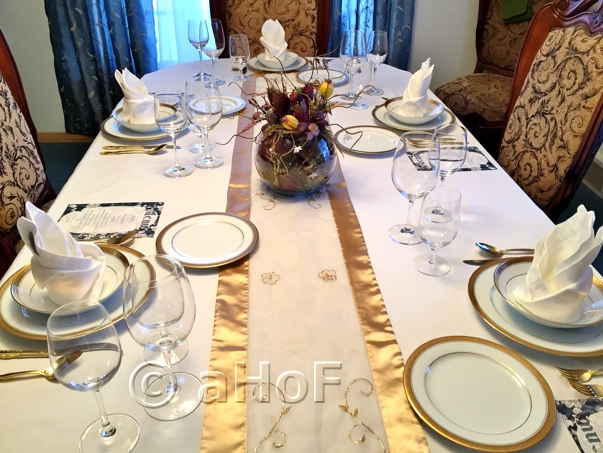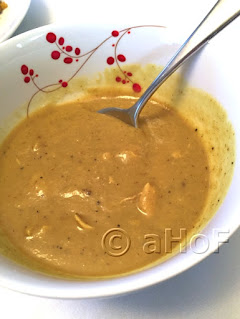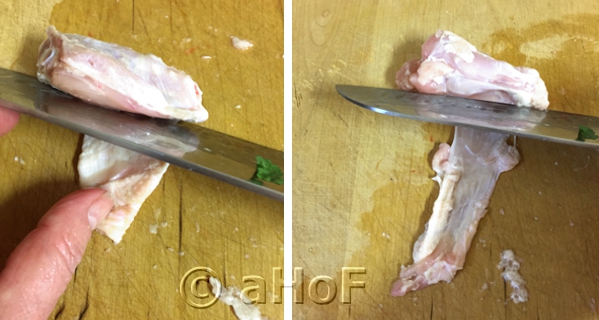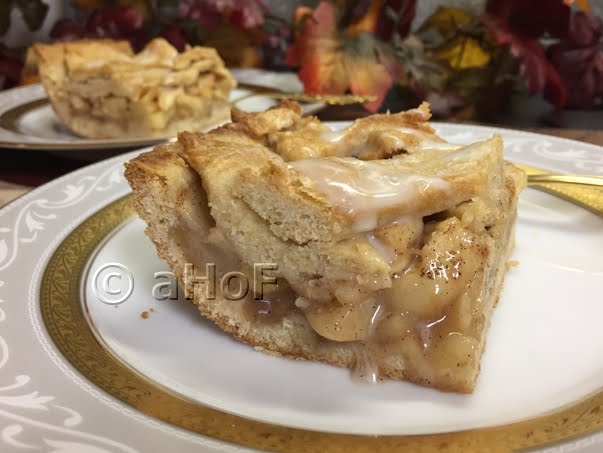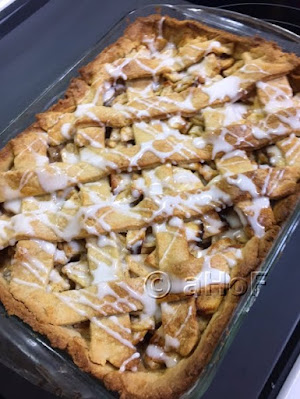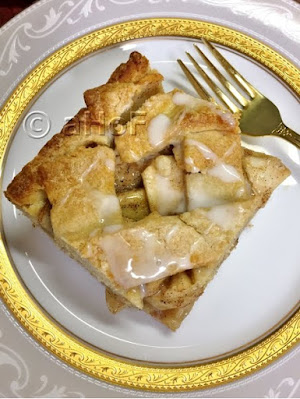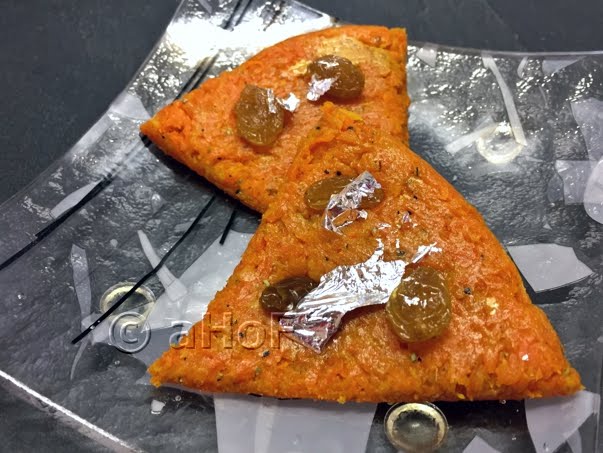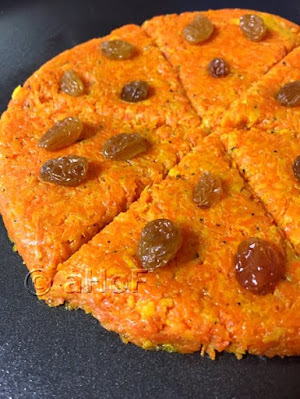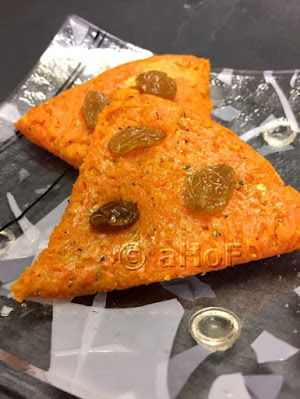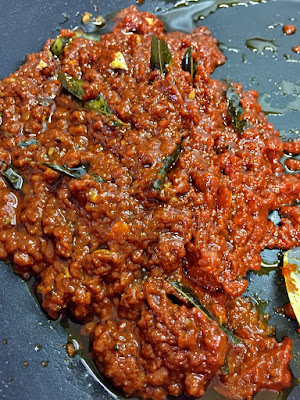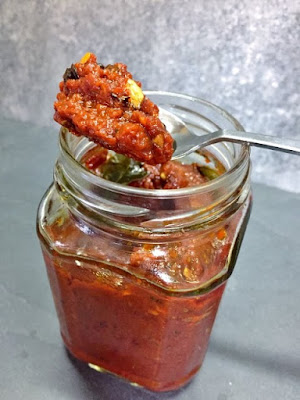My ethnicity being divided between the Vojvodina area of Serbia and Slovakia via grandparents who immigrated to the US in the very early 1900s, I was brought up in great part on the recipes that came with them from "the old country." One of those recipes (which I absolutely did not like as a child) was Holupki. This is alternatively spelled in so many ways throughout Europe that it would be difficult to cover them all, but in essence, these are hamburger (or pork) and rice-stuffed cabbage rolls. My Mom called them "Pigs-in-a-Blanket", though this has become the title for little sausages wrapped in a dough of some kind. But you get the idea. This is the recipe for Holupki that I have made through the years:
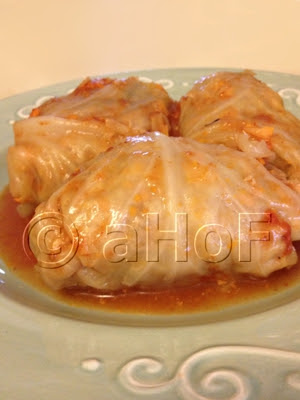 |
| Holupki aka Stuffed Cabbage Rolls |
Holupki (Stuffed Cabbage Rolls)
Makes approximately 12, depending on size
1 large cabbage
2 pounds hamburger meat
(or substitute ½ pound of the meat with ground pork)
1 medium onion, chopped and lightly sauteed
2 cloves garlic, minced
1 egg
2 teaspoons salt
½ teaspoon fresh ground pepper, or to taste
2 teaspoons sweet Hungarian paprika
2 teaspoons sweet Hungarian paprika
1 cup rice, uncooked
1 (14-ounce) can tomato sauce
1 (14-ounce) can crushed tomatoes
½ teaspoon sugar (to round out the flavor)
½ teaspoon salt
2 bay leaves
2 or more sprigs fresh thyme
water, as needed to cook
Bring a large pot of water to boil. Remove some of the outer cabbage leaves, as whole as possible. Place into the boiling water until they are soft, then remove and set aside. When the leaves on the remaining cabbage become too entangled to separate, place the rest of the whole head into the pot and allow the leaves to soften. Remove periodically to trim off leaves at the core end. You will need at least 12 or so viable cabbage leaves for rolling the meat. Take the remaining cabbage and chop roughly. Place half the chopped cabbage into the bottom of a large pot or Dutch oven. Set aside the remaining chopped cabbage.
In a large bowl, mix together the meat(s), onion, garlic, egg, salt, pepper, paprika and rice. Do not over mix. Trim off the thickest parts of one cabbage leaf, then take one portion of meat mixture (approximately ⅔ to ¾ cup worth) and set on one end of the leaf. Roll, burrito-style, folding in ends and tucking as necessary. Repeat, until all the meat is rolled into cabbage leaves. Place the rolls into the pot, on top of the chopped cabbage. Top with the remaining chopped cabbage. Tuck the bay leaves down between the rolls, and place the thyme sprig(s) on top.
Combine the tomato sauce and crushed tomatoes. Add in more salt and pepper, to taste. Pour the tomato mixture over the cabbage rolls. The rolls should not be submerged, but nearly covered. If the tomato mixture is not quite high enough, add water until just the tops of the rolls are visible.
Set over high heat to bring to boil, reduce to a simmer, cover and cook for about 1½ - 2 hours. Best served with mashed potatoes.
As I grew up and particularly while in Guatemala, far from home and Mom's cooking, I started to have a better appreciation for those recipes that were a large part of my childhood. I will say that although I have made these Stuffed Cabbage Rolls quite a few times over the intervening years, the one reason I do not make them more often is that it is kind of a royal pain to make them. So while perusing Pinterest one day recently, I came across a photo, and them the recipe for what someone called "Unstuffed Cabbage." I am sure many have seen or done this, and I know I have seen this on Facebook also. Somehow though, with the cooler days, I suddenly perked up when I saw this recipe.
I printed it off, mainly to compare with what I put into my own recipe for Holupki. Turns out it was not so very different - mainly differences in amounts of things. Today I decided to attempt this. It certainly goes together quickly, all things considered. The recipe I read called for browning the hamburger meat, and the rice was omitted. I happen to like the rice-in-the-meat part of this recipe, so I decided to make meatballs of the meat and rice mixture. Of course while they are cooking they start looking a little like porcupines with the grains of rice sticking out every which way!
 |
| Unstuffed Cabbage |
Still, the meatballs held together, mostly, throughout the cooking process, and the amount of liquid in the pot diminished a lot. Before serving, I had to add more water and a little more salt for balance. With the stirring and mixing process, many of the meatballs started to come apart. I did not pack the meat when making the meatballs, and maybe this would have made a difference. Who knows? Despite the meatballs coming apart more and more each time I had to mix or ladle, the soup / stew was delicious. Whereas my husband would remove all of the cabbage from the Cabbage Rolls in past, eating only the meat mixture inside - when presented this way he ate everything, including the cabbage, with no problem at all. I would say that this dish was a hit. It tasted great, was totally reminiscent of the Holupki I grew up with, and my husband will eat it. These criteria make this a hit in my book!
Unstuffed Cabbage
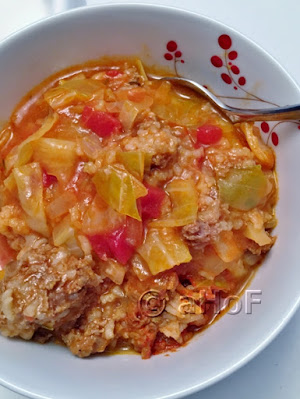 |
| Unstuffed Cabbage |
Makes a large pot, at least 8 servings or more
1 tablespoon olive oil
1 onion, chopped
3 or 4 cloves garlic, minced
2 pounds lean hamburger
1 cup long grain white rice
1 egg
1½ teaspoons salt
2 teaspoons Hungarian sweet paprika
½ teaspoon freshly ground black pepper
--------
8 cups water
1½ teaspoons salt
1 onion, halved, cut in thin slices
1¼ pounds cabbage, cut in small pieces
1 sprig of fresh thyme
2 bay leaves
1 (14-ounce) can petite diced tomatoes
1 (14-ounce) can tomato sauce
1 (6-ounce) can tomato paste
2 tablespoons vinegar
2 teaspoons sugar
In a skillet heat the oil and saute the chopped onion until it is just beginning to brown. Add the garlic and toss for a minute or two. While the onion is cooking, set a large pot on a burner and add in the water and 1½ teaspoon of salt. Bring to boil.
In a mixing bowl, combine the hamburger, rice, egg, 1½ teaspoons salt, paprika and pepper. Add in the sauteed onion and garlic and mix together very well. The meatballs are made in a snap if you have a cookie scoop. I used a cookie scoop, rounding the meat in the scoop as I formed 1½-inch diameter meatballs. Drop the meatballs into the pot of boiling salted water. As they start to be crowded, remove them to a plate using a slotted spoon. Once all the meatballs are set, add to the water in the pot the sliced onion, cabbage, thyme, bay leaves, the three cans of tomato (diced, sauce & paste), the vinegar and sugar. Return to the pot any meatballs that were set aside. Gently stir to combine the whole, then cover and simmer for 40 minutes or up to an hour.
Serve as a soup or stew. We always ate Holupki with mashed potatoes on the side. If you wish, mashed potatoes or other cooked potatoes would also be good with this soup, though with rice already in it, potatoes aren't truly needed.
My passion is teaching people how to create a harmony of flavors with their cooking, and passing along my love and joy of food, both simple or exotic, plain or fancy. I continue my journey in ethnic and domestic cuisines, continuing my journey to explore diverse culinary experiences and hopefully to start you on a journey of your own. Join me also at A Harmony of Flavors on Facebook, and Pinterest.
